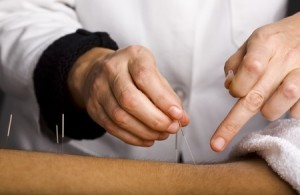Spinal Stenosis
Lower back pain caused by spinal stenosis can become a primary force in sufferers’ lives, influencing everything you do and every area of your existence. While there are many forms of treatment available for this condition, success depends on a range of factors. Acupuncture for spinal stenosis is showing promising results in combatting the pain associated with the condition, however, and may be the solution you’ve been searching for.
Recently, several leading clinical studies have revealed that this ancient method of healing can have a marked impact on the pain levels of patients suffering with lower back pain, particularly when it’s caused by spinal stenosis.
What Is Spinal Stenosis?
Spinal stenosis can be a confusing and concerning diagnosis, mostly because it is not a commonly-known or widely-shared cause of lower back pain. The condition results from the narrowing of the central “tunnel” through the vertebrae that make up your spine. This narrowing constricts the nerves of your spinal cord, and can produce pressure on the intravertebral discs of cartilage.
The most common area patients feel the effects of spinal stenosis is the lumbar region, or the lower back area. There are five vertebrae in this part of the spine, and it is this part of the back where back pain is most common. In the case of spinal stenosis, the pain would manifest as:
- Trouble walking for distances.
- Need to bend over to relieve pressure on your lower back area.
- Numbness or pain in your legs.
- Bowel and bladder control problems.
Causes of Spinal Stenosis
If you’re considering acupuncture for your lower back pain, you first need to receive an accurate diagnosis of the cause of the pain. In patients with spinal stenosis, a medical history is likely to turn up one or more of the following potential causes:
- Spinal injuries, sometime in the past.
- Previous surgical procedures on your spine.
- Tumors on or near the spine.
- Bone diseases, like osteoporosis.
- Rheumatoid arthritis.
All of these conditions can lead to narrowing of the spinal column, which is the primary direct cause of lumbar spinal stenosis. In the vast majority of patients, these root causes will only appear as spinal stenosis after the age of 50 years.
Treatment for Spinal Stenosis
In patients who have been diagnosed with spinal stenosis, several traditional treatment methods are recommended:
- Non-steroidal anti-inflammatory drugs.
- Anti-depressants and muscle relaxants.
- Anti-seizure drugs and in cases of severe pain, opioid pain relievers.
- Lifestyle changes.
- Injectable steroids.
There is, however, growing confidence in alternative and supplementary therapies, like acupuncture for spinal stenosis, which according to a broad study of back pain subjects in 2008, provided pain relief to some degree to the majority of patients studied. Long term pain relief varies based on the cause of pain. However, this study and others like it indicate that acupuncture for back pain can be a successful method of providing a degree of pain relief.
If You Suffer from Spinal Stenosis
The spine is a delicate and critical part of our bodies, and if you are experiencing acute or chronic back pain, it is critical you receive an in-depth medical diagnosis, including x-rays, MRIs and other types of testing. If your back pain is found to be related to spinal stenosis, however, acupuncture for back pain can be a successful and helpful form of complementary treatment, which can provide both pain relief and improved mobility.
It’s certainly well worth considering, particularly if surgical intervention is not an option, or if you want to avoid using heavy prescription pain medication.

